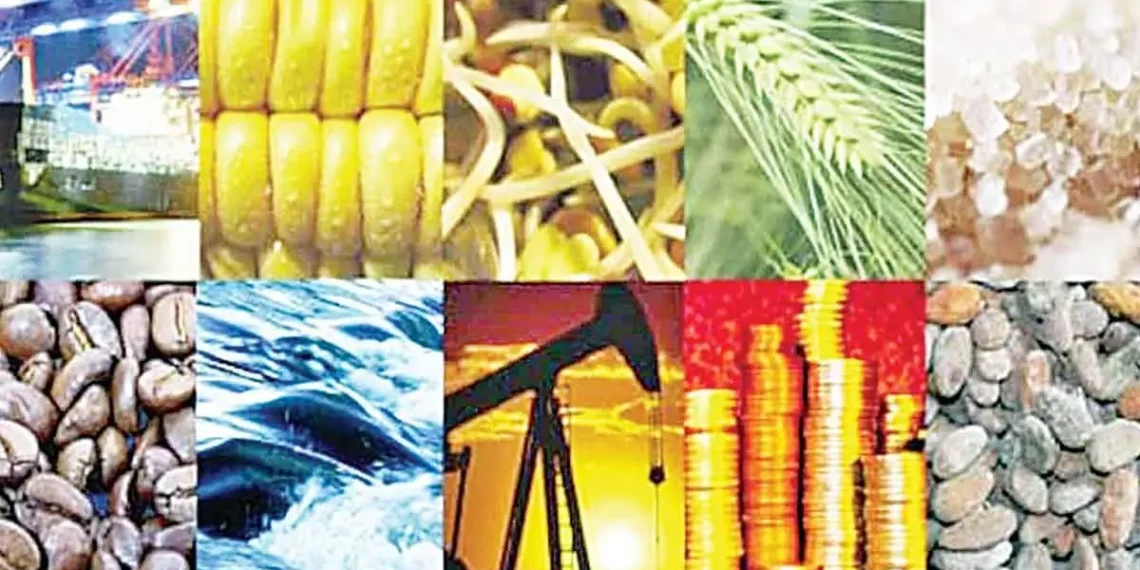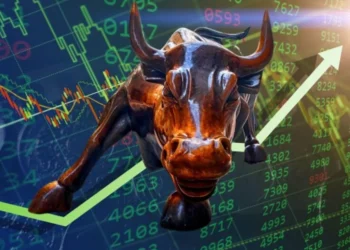In the wake of a significant downturn, global commodity prices have reached a plateau, a trend that could complicate efforts to curb inflationary pressures, as highlighted in the latest Commodity Markets Outlook by the World Bank.
The report Indicated that the steep decline in commodity prices over the past year has been instrumental in tempering inflation rates worldwide. However, this stabilization may hinder the ability of central banks to swiftly enact interest rate reductions.
Between mid-2022 and mid-2023, the world witnessed a substantial drop of nearly 40% in global commodity prices. This downward trajectory significantly contributed to a notable reduction of approximately 2 percentage points in global inflation during the same period.
Yet, since mid-2023, the World Bank’s commodity price index has exhibited minimal fluctuations, indicating a leveling off of prices.
The World Bank’s projections anticipate a modest decrease of 3% in global commodity prices for the year 2024, followed by a 4% decline in 2025. However, this gradual decline may not be sufficient to rein in inflation, which continues to surpass central bank targets in many nations.
Furthermore, these projected decreases would still leave commodity prices approximately 38% higher than their pre-pandemic averages, underscoring the enduring impact of recent economic upheavals.
Moreover, the report raises concerns about the potential for geopolitical conflicts, particularly in the Middle East, to disrupt the downward trajectory of inflation. A major outbreak of conflict in the region could reverse the trend of declining inflation, posing additional challenges to global economic stability.
Persistently high geopolitical tensions over the past two years have propped up the price of oil and many other critical commodities even as global growth has slowed. The price of Brent crude oil, for example, surged to $91 per barrel earlier this month—nearly $34 per barrel above the 2015-2019 average.
The World Bank’s forecasts indicate that Brent prices will average $84 per barrel in 2024 before declining to an average of $79 in 2025, assuming no conflict-related supply disruptions. If the conflict in the Middle East were to escalate further, however, oil-supply disruptions could push up global inflation.
A moderate conflict-related supply disruption could raise the average Brent price this year to $92 per barrel. A more severe disruption could see oil prices surpass $100 per barrel, raising global inflation in 2024 by nearly one percentage point.
Striking Divergence Emerging
Ayhan Kose, the World Bank Group’s Deputy Chief Economist and Director of the Prospects Group noted that a striking divergence is emerging between global growth and commodity prices: despite relatively weaker global growth, commodity prices will most likely remain higher in 2024-25 than in the half-decade before the COVID-19 pandemic.
“One critical factor behind this divergence relates to heightened geopolitical tensions that are keeping upward pressure on prices of major commodities and stoking risks of sharp price movements. Central banks must remain alert about the inflationary implications of commodity-price spikes amid elevated geopolitical tensions.”
Ayhan Kose
Meanwhile, the average price of gold, a popular choice for investors seeking “safe haven” is expected to hit a record in 2024 before moderating slightly in 2025. Gold holds a special status among assets, often rising in price during periods of geopolitical and policy uncertainty, including conflicts.
Strong demand from several developing-country central banks, along with heightened geopolitical challenges, is expected to bolster gold prices throughout 2024.
Escalation of Middle East Could Drive Up Prices
An escalation of the conflict in the Middle East could also drive up prices of natural gas, fertilizers, and food, the report noted. The region is a crucial gas supplier— 20% of global liquefied natural gas (LNG) trade transits the Strait of Hormuz. If the LNG supply were interrupted, fertilizer prices would also rise substantially, likely driving up food prices.
The Bank’s baseline forecast, however, is for overall food prices to decline somewhat by 6% in 2024 and 4% in 2025. Fertilizer prices are expected to fall by 22% in 2024 and 6% in 2025.
Accelerating investment in green technologies has bolstered prices of key metals that are critical for the global clean-energy transition. Prices of copper which is necessary for electricity-grid infrastructure and electric vehicles surged to a two-year high this month.
They are expected to rise 5% in 2024 before stabilizing in 2025. Prices of aluminum are forecast to rise by 2% in 2024 and 4% in 2025, bolstered in particular by the production of electric vehicles, solar panels, and other renewable-power infrastructure.
The report also contains a special focus section evaluating the performance of five well-known approaches used to forecast the prices of three key commodities: crude oil, copper, and aluminum. It finds that each of them suffers from certain deficiencies, but each also offers important advantages.
As a result, the analysis suggests, forecasts are most accurate when they reflect a variety of analytical approaches and a healthy dose of judgment.
READ ALSO: Political Communications Strategist Lauds Mahama’s Running Mate Choice





















